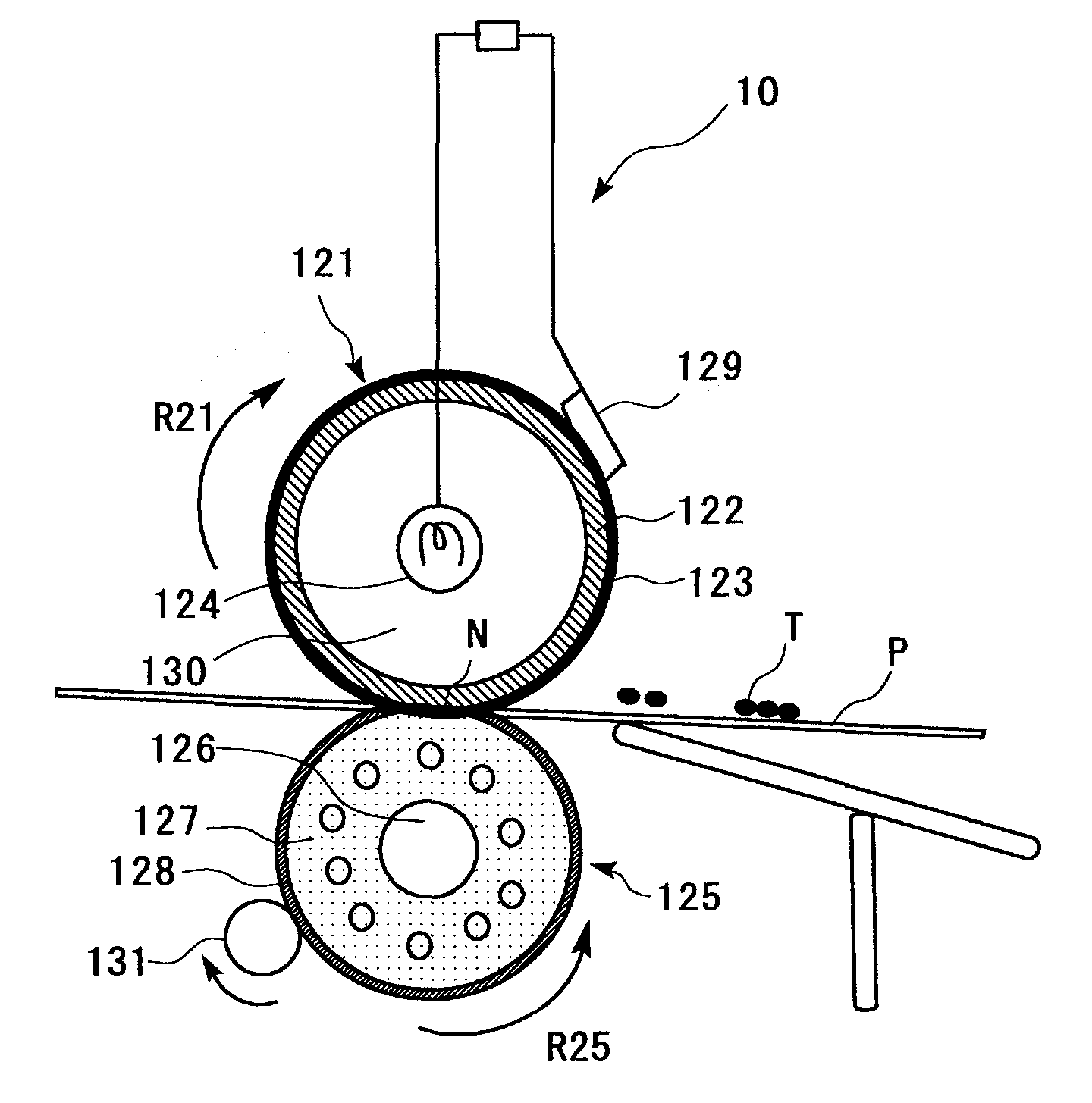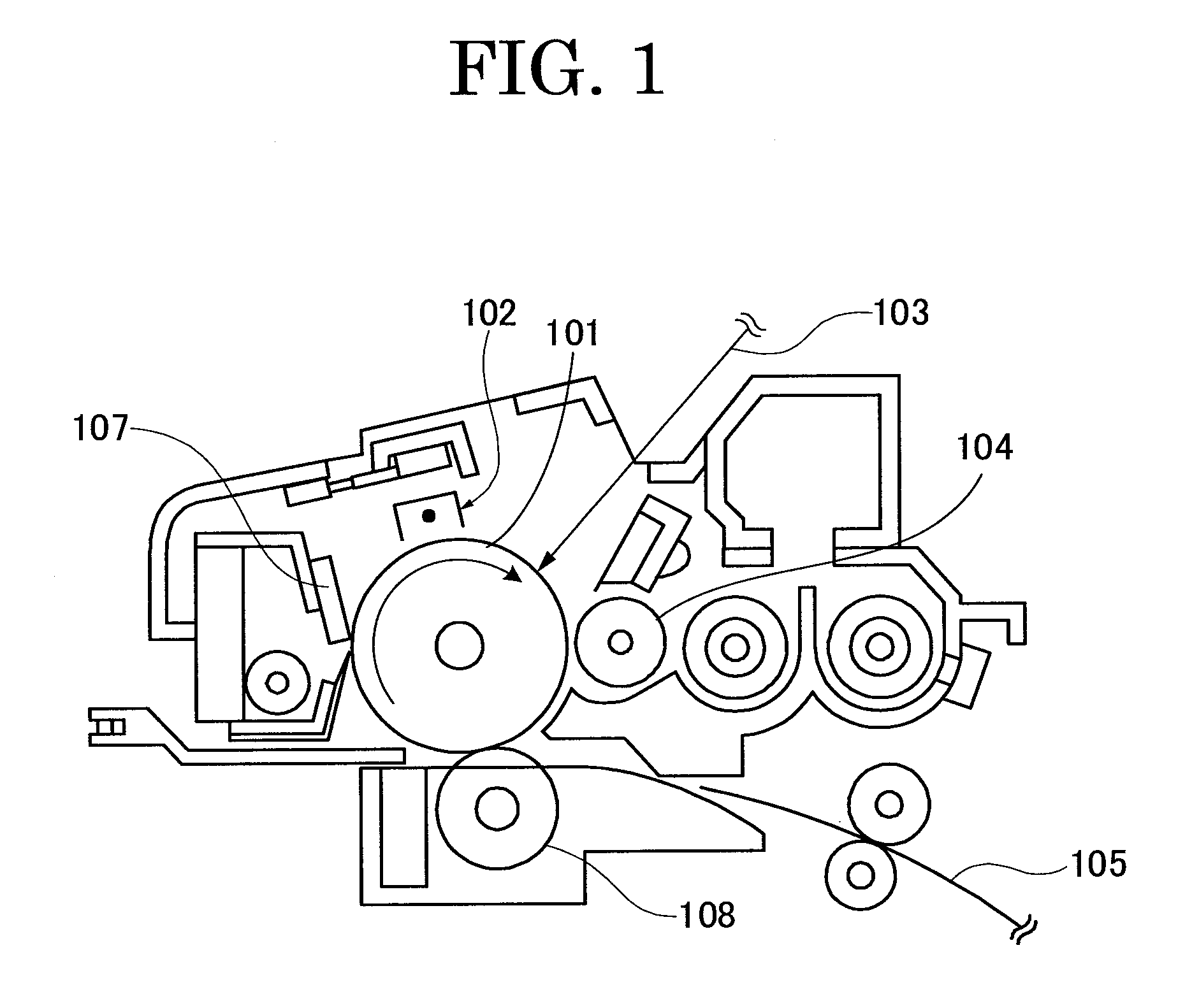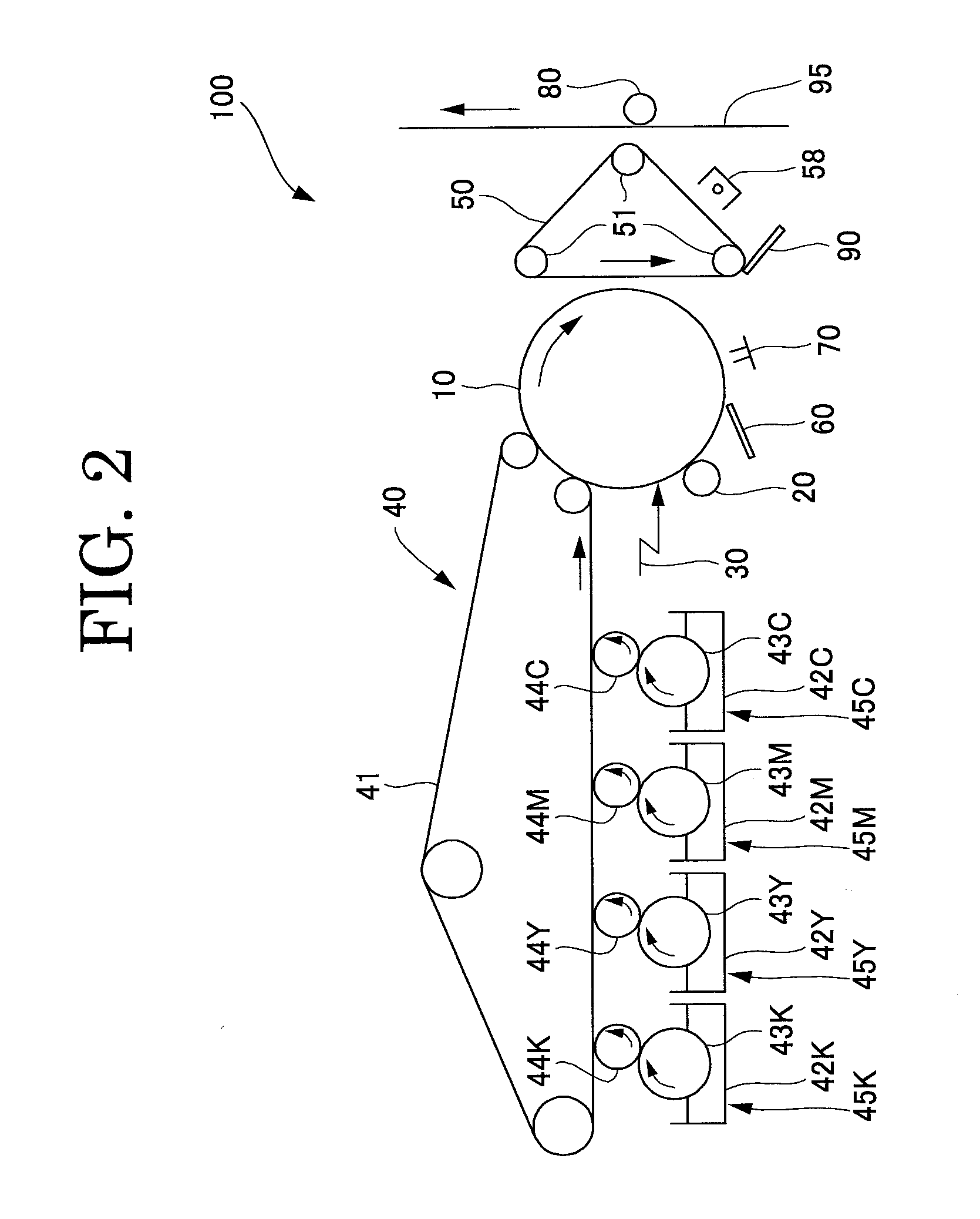Toner and developer, toner container, process cartridge, image forming apparatus, and image forming method using the same
- Summary
- Abstract
- Description
- Claims
- Application Information
AI Technical Summary
Benefits of technology
Problems solved by technology
Method used
Image
Examples
example
[0346] Herein below, with referring to Examples, the invention is explained in detail and the following Examples should not be construed as limiting the scope of this invention. In the following Examples, “parts” represents “parts by mass”, “%” represents “% by mass”, “AV” indicates acid value and “OHV” indicates hydroxyl value unless indicated otherwise.
example a-1
Synthesis of Polyester (A1)
[0347] In a reaction vessel equipped with cooling tube, stirrer and nitrogen introducing tube, 809 parts of bisphenol A propylene oxide 3-mol adduct, 196 parts of terephthalic acid, 44 parts of adipic acid, 5.8 parts of trimellitic anhydride and 2 parts of dibutyltin oxide were put and reacted at 230° C. and normal pressures for 8 hours and then further reacted for 5 hours while dehydrating at a reduced pressure of 10 mmHg to 15 mmHg to obtain a polyester (A1) of OHV52 and AV0.8.
[0348] The mass average molecular weight Mw of the polyester (A1) was 10,200, and the glass transition temperature Tg was 30.2° C.
Synthesis of Polyester Prepolymer (B1)
[0349] After 409 parts of polyester (A1) described in Example A-1 and 495 parts of ethyl acetate were put in a reaction vessel equipped with cooling tube, stirrer and nitrogen introducing tube and dissolved while being stirred at room temperature, 95.5 parts of isophorone diisocyanate was added and reacted at 80°...
example a-2
Synthesis of Polyester (A2)
[0354] The polyester (A2) of OHV43 and AV0.7 was obtained similarly to Example A-1, except for using 730 parts of bisphenol A propylene oxide 3-mol adduct, 65 parts of bisphenol A ethylene oxide 2-mol adduct, 234 parts of terephthalic acid, 23 parts of adipic acid, 6.1 parts of trimellitic anhydride and 2 parts of dibutyltin oxide.
[0355] The mass average molecular weight Mw of the polyester (A2) was 13,300, and the glass transition temperature Tg was 35.0° C.
Synthesis of Polyester Prepolymer (B2)
[0356] The ethyl acetate solution (solid content of 50.5%) of polyester prepolymer (B2) was obtained similarly to the [Synthesis of Polyester Prepolymer (B1)] of Example A-1, except for using 422 parts of polyester (A2) described in Example A-2, 495 parts of ethyl acetate and 83.4 parts of isophorone diisocyanate.
[0357] The viscosity of the polyester prepolymer solution was 1,380 mPa·s / 25° C. and the content of isocyanate was 1.36%.
[0358] And afterward, the f...
PUM
| Property | Measurement | Unit |
|---|---|---|
| Glass transition temperature | aaaaa | aaaaa |
| Glass transition temperature | aaaaa | aaaaa |
| Glass transition temperature | aaaaa | aaaaa |
Abstract
Description
Claims
Application Information
 Login to View More
Login to View More - R&D
- Intellectual Property
- Life Sciences
- Materials
- Tech Scout
- Unparalleled Data Quality
- Higher Quality Content
- 60% Fewer Hallucinations
Browse by: Latest US Patents, China's latest patents, Technical Efficacy Thesaurus, Application Domain, Technology Topic, Popular Technical Reports.
© 2025 PatSnap. All rights reserved.Legal|Privacy policy|Modern Slavery Act Transparency Statement|Sitemap|About US| Contact US: help@patsnap.com



